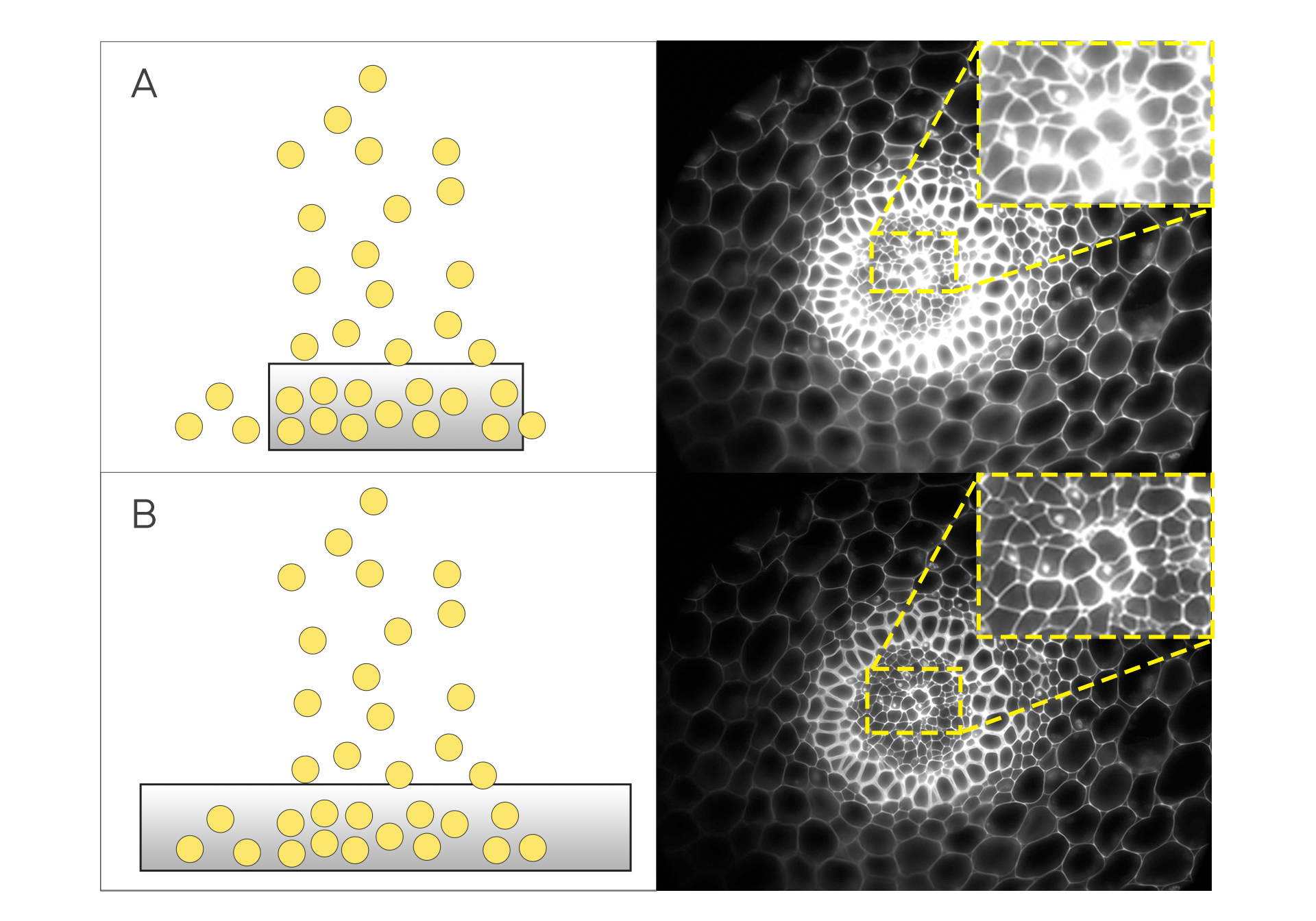The Full Well Capacity is the amount of detected signal that each pixel can accommodate, determining the brightest signal that the camera can detect before saturation is reached. If a pixel becomes saturated due to filling the pixel well, the intensity of that pixel is no longer accurately recorded. High full well capacity is an advantage in applications that require large dynamic range.

Figure 1 visualizes the relationship between full well capacity and dynamic range. Figuer 1A : The low full well capacity makes the image lost bright signals information. Figuer 1B : The high full well capacity make the image get full information from weak to bright signals.
When photons are detected during image exposure, they release electrons within the silicon, which are then stored in the pixel well until readout. The pixel has a maximum number of electrons that can be stored before either the physical store is full, or the digital image greyscale value reaches a maximum. Ideally, exposure time and light levels should be set such that this is never allowed to happen. However, in cases where both high and low signals appear in the same image, using lower exposure times or illumination light levels can yield signals too low for meaningful detection or measurement in the dim parts of the image as noise interferes with weak signals. Higher full well capacity allows greater exposure times or light levels for detecting dim signals, without saturating high signals. For more information on Dynamic Range, see the ‘Dynamic Range’ glossary section.
If working exclusively in low-light conditions, or if dynamic range is not a major concern in your imaging, full well capacity will play less of a role in determining your ideal camera parameters. Some cameras have multiple readout options and modes, offering different frame rate, noise characteristics, and full well capacity. For these cameras, a trade-off is often possible where higher camera frame rates can be achieved in exchange for reducing the accessible full well capacity, ideal for high speed, low light imaging scenarios.

 22/05/13
22/05/13







